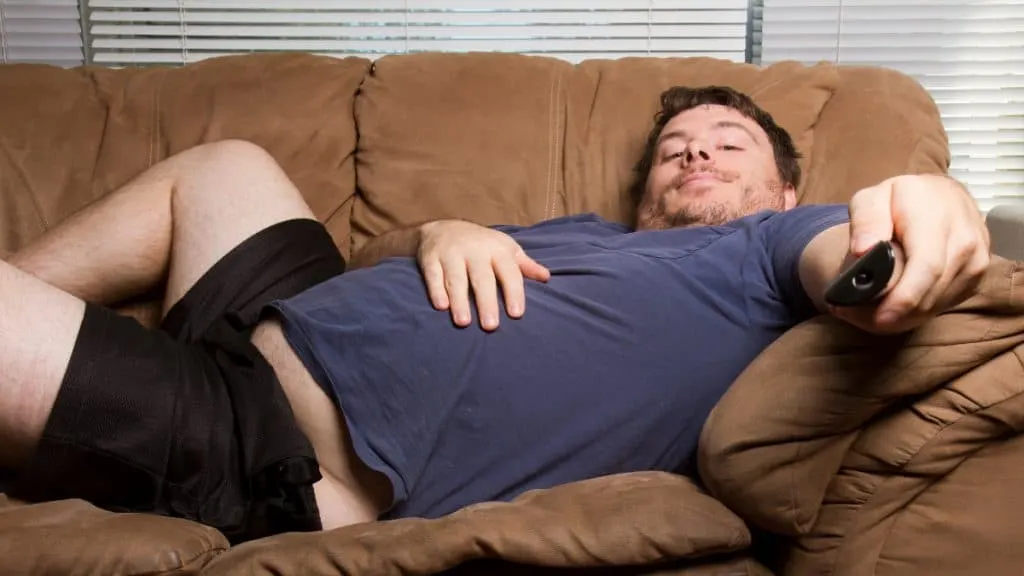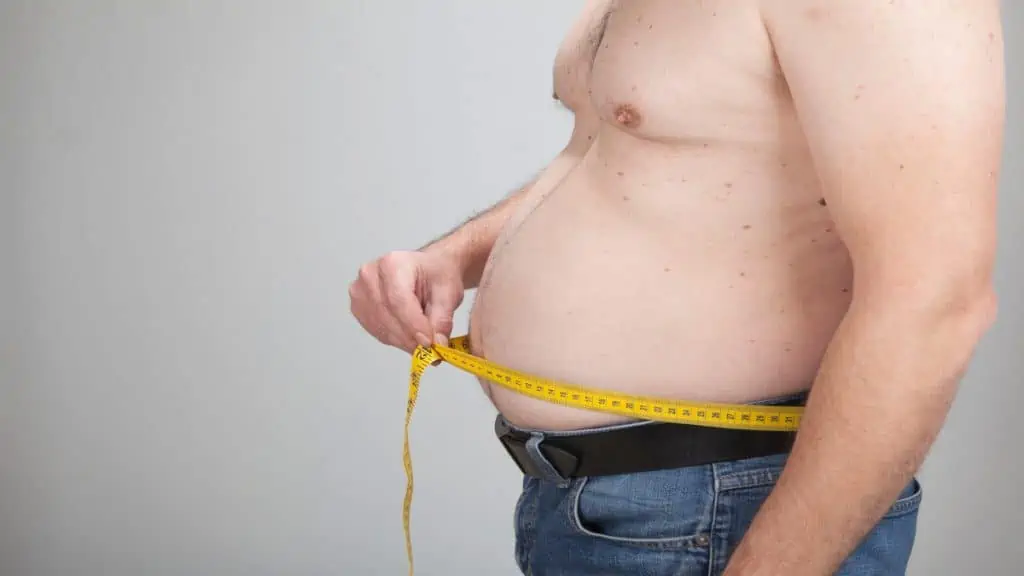What is considered a small waist? For men, anything under 35 inches is considered relatively slim.
For women, that value is 31.5 inches.
So, as you can see, a 52 inch waist is much larger than the optimal size. And while you can still be happy with your body at a variety of shapes and sizes, you simply cannot achieve peak health while having a 52″ waist.
This guide explains why having a 52 in waist is bad for your cardiovascular health and then offers some safe and effective strategies for slimming your stomach naturally. You can also read our other waist size guides for more information and to see how you compare.
Should you be concerned about having a 52 inch waist?

In terms of your physical health? Yes. In terms of what other people think? No. Not unless they’re giving you good advice that could really improve your health.
When you’re obese, which you most likely are if you have a 52 inch waistline, your heart has to work harder to support your body mass and carry it around. So it’s no surprise that people with excessively large stomachs tend to have a higher risk of developing heart disease, diabetes, hypertension, and certain types of cancers.
Having a 52 in waist is outright dangerous for your physical health—there’s just no getting around this sad fact.
However, a given waist size is more damaging to your health the higher your waist-to-hip or waist-to-height ratio is. Indeed, these measurements are especially useful for assessing your body fat distribution because they’ll let you know if you’re storing too much fat on your stomach, which is a problem area for many people. [1]
Why do some people have a 52 inch waist, to begin with?

Some sources suggest that weight loss is more difficult for obese people since their bodies can’t use energy as efficiently. [2] While this may be the case—and if it is, the reason for the phenomenon remains unclear—you can still lose weight by reducing your calorie intake and increasing your activity level.
So while you may have to fight harder against the will of your biology, weight loss is still possible if you work out consistently and eat a healthy, whole foods diet (which can be very tasty if you follow delicious recipes).
Of course, with junk food at our fingertips and increasingly hectic lifestyles that don’t appear to leave much time for exercise, it can often seem like weight gain is an inevitable part of living in the modern world.
But it doesn’t have to be that way. Rather than scrolling through your social media feed during your lunch break, why not go for a walk instead? Sure, walking for 20 minutes or half an hour might not seem like much, but these short bursts of activity really start to stack up over the course of the weeks and months.
Additionally, if you don’t have time to hit the gym, could you at least commit to three 20 minute workouts per week? You don’t need any equipment (though a pair of dumbbells would open up new workout possibilities), and you can even watch your favorite shows on your TV or laptop while you’re training.
How can you slim your 52 in waist safely?

Although the gym can be a great place to get fit while making friends, many people prefer to exercise at home due to time constraints.
Circuit training is one of the best ways to slim your 52 inch waist and regain your health. The reason for this is that circuits work the major muscles in your body while simultaneously improving your cardiovascular fitness (because you’re doing the exercises one after the other).
Of course, to lose weight, you still need to reduce your calories so that your body can effectively shed some of its mass. But if you’re willing to exercise a few times per week and go for a daily walk, you don’t need to reduce your calories as much because you’re burning more calories by being active.
In other words, working out—especially vigorously—helps you to create an energy deficit, which you can also do by restricting your calories.
The verdict: When will you see results?

Weight loss isn’t a case of the faster, the better. When you lose too much weight too quickly, you often end up burning out and giving up, which can make you pile the weight back on.
Instead, if you want to slim your 52 inch waist successfully, start by reducing your calorie intake by around 500 calories per day. Also, add in the weekly circuit workouts that I recommended above.
This should be more than enough to trigger weight loss (losing one pound per week is great). In time, you should aim to keep your waist to less than half of your height, which is to say that your waist-to-height ratio should be <0.5. [3]
I hope that you’re now armed with the knowledge and awareness that you need to reduce your 52″ waist. And, hopefully, you’ll be motivated to keep going when you start to experience results!
References
- Bergman, R. N. (2012). A Better Index of Body Adiposity. Obesity, 20(6), 1135. https://doi.org/10.1038/oby.2012.99
- Grover, N. (2021, August 27). Weight loss via exercise harder for obese people, data suggests. The Guardian. https://www.theguardian.com/society/2021/aug/27/losing-weight-through-exercise-may-be-harder-for-obese-people-research-says
- Gibson, S., & Ashwell, M. (2019). A simple cut-off for waist-to-height ratio (0·5) can act as an indicator for cardiometabolic risk: recent data from adults in the Health Survey for England. British Journal of Nutrition, 123(6), 681–690. https://doi.org/10.1017/s0007114519003301

